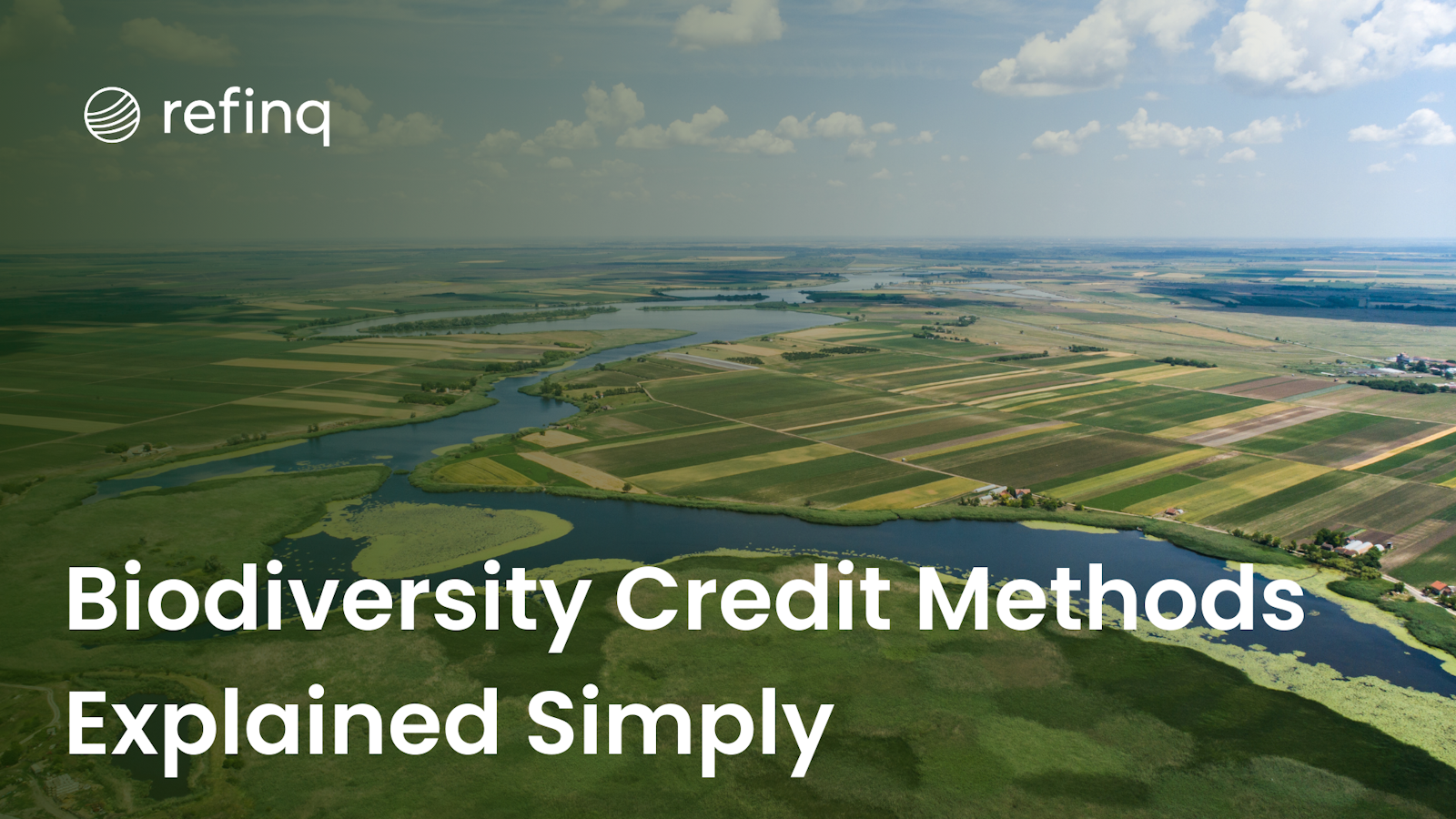

As global awareness of environmental conservation grows, biodiversity credits are emerging as a powerful tool to incentivize the protection of natural ecosystems. Recently, Colombia made headlines by approving the world's first voluntary biodiversity credit methodology, setting a precedent for other nations. (Read about Colombia's initiative). Understanding these methodologies is crucial for businesses and policymakers aiming to contribute to biodiversity conservation while meeting regulatory requirements.
Biodiversity credits represent a financial mechanism that quantifies the value of biodiversity and allows entities to invest in conservation projects. (Learn what biodiversity credits are). Companies like refinq are at the forefront of providing advanced tools to help organizations navigate the complexities of biodiversity assessments and credits. (Discover how refinq empowers businesses).
Biodiversity Credits: Tradable units representing a measurable amount of biodiversity conserved or restored.
Purpose: Provide a market-based approach to incentivize conservation efforts and enable businesses to offset their biodiversity impacts.
(Explore biodiversity credits in detail)
Assessment: Quantifying biodiversity gains from conservation projects.
Certification: Validating the credits through standardized methodologies.
Trading: Buying and selling credits in voluntary or regulatory markets.
(Understand how biodiversity credits work)
Increasing Demand: Businesses are seeking ways to demonstrate environmental responsibility.
Regulatory Support: Governments are implementing policies that encourage or require biodiversity offsets.
(Read about the rise of biodiversity credits)
Pioneering Effort: Colombia is the first country to approve a voluntary biodiversity credit methodology.
Impact: Sets a framework for quantifying and trading biodiversity credits, encouraging investment in conservation.
(Learn about Colombia's biodiversity credit methodology)
Methodologies: Provide guidelines on how to measure, report, and verify biodiversity outcomes.
Organizations Involved: Various NGOs and international bodies are developing standardized methodologies.
(Discover biodiversity credit methodologies)
Baseline Assessment: Establishing the initial state of biodiversity.
Monitoring and Reporting: Ongoing evaluation of conservation efforts.
Additionality: Ensuring that credits represent genuine, additional conservation outcomes.
(Understand the components of biodiversity credits)
Latin America: Countries like Colombia and Brazil are pioneering biodiversity credit systems to protect rainforests and other vital ecosystems.
Australia: Implemented one of the earliest biodiversity offset programs, integrating credits into land-use planning.
Europe: Nations are incorporating biodiversity credits into environmental regulations and corporate sustainability strategies.
(Explore global implementation of biodiversity credits)
Africa: Emerging projects focusing on wildlife conservation and habitat restoration.
Asia: Incorporating biodiversity credits into development projects to mitigate environmental impacts.
SDG 15 - Life on Land: Biodiversity credits directly contribute to the conservation and sustainable use of terrestrial ecosystems.
SDG 13 - Climate Action: Promotes ecosystem resilience and carbon sequestration through habitat preservation.
(Learn about biodiversity credits and sustainability goals)
Environmental Responsibility: Helps businesses mitigate their biodiversity footprint.
Stakeholder Engagement: Demonstrates commitment to sustainability, enhancing brand reputation and investor confidence.
(Understand how biodiversity credits align with corporate sustainability)
Species Richness: The number of different species present in an area.
Habitat Quality: Assessment of the condition and functionality of ecosystems.
Ecosystem Services: Evaluation of benefits provided by ecosystems, such as pollination and water purification.
(Discover metrics used in biodiversity credits)
Habitat Hectares: Combines habitat condition and area to quantify biodiversity value.
Biodiversity Offsets Calculator: Software tools that calculate the number of credits needed to offset impacts.
Ecosystem Function Index: Measures the functionality and health of ecosystems.
Measurement Complexity: Biodiversity is multifaceted, making quantification difficult.
Market Development: Biodiversity credit markets are still emerging, requiring regulatory support.
Corporate Responsibility: Businesses can enhance their sustainability profiles.
Conservation Funding: Generates financial resources for environmental projects.
(Learn about the challenges and opportunities)
refinq is a pioneering SaaS platform designed to help enterprises effectively manage environmental risks through advanced climate and biodiversity risk assessments. By processing over 2.5 billion data points from earth observations and climate models, refinq provides real-time risk evaluations with a granularity of up to 25 meters for any global location. (Explore refinq's biodiversity solutions)
Actionable Insights: Translates complex environmental data into practical strategies for biodiversity conservation.
Regulatory Compliance: Aligns assessments with international frameworks like TNFD, CSRD, ESRS, and SBTN, ensuring compliance with biodiversity credit methodologies.
Future Forecasting: Capable of forecasting environmental impacts up to the year 2100, helping businesses prioritize conservation actions.
User-Friendly Tools: Offers tailored solutions for due diligence and portfolio impact analysis, aiding in the accurate quantification of biodiversity credits.
By integrating refinq into their environmental strategies, organizations can navigate the complexities of biodiversity credits more effectively, ensuring both compliance and positive environmental impact. (Discover how refinq empowers businesses)
Understanding biodiversity credit methodologies is essential for businesses and policymakers committed to environmental sustainability. These methodologies provide a structured approach to quantifying and trading biodiversity conservation efforts, creating financial incentives for protecting ecosystems. While challenges exist in measurement and market development, the opportunities for positive environmental impact and corporate responsibility are significant.
Platforms like refinq play a crucial role in this landscape by offering advanced tools and insights that align with biodiversity credit methodologies. By leveraging such technologies, organizations can make informed decisions that contribute to conservation efforts while achieving their strategic objectives.
Colombia's Voluntary Biodiversity Credit Methodology Approved (Mongabay)
Understanding Biodiversity Credits: A Short Guide (Natural Solutions)
Introducing Our Biodiversity Credit Methodology (Aleksandra Holmlund)
Biodiversity Credits: Everything You Need to Know (British Ecological Society)
What Are Biodiversity Credits and How Do They Work? (Global Landscapes Forum)